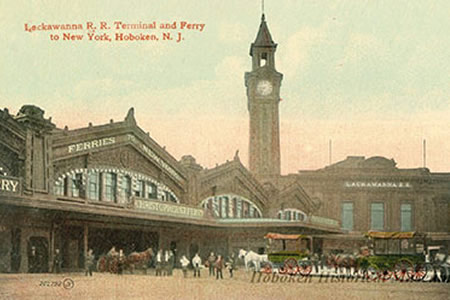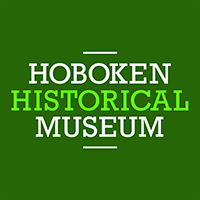The Stevens Family
The Family
The grandfather of Hoboken’s founder, also named John Stevens, emigrated from England to New York City in 1699 at the age of seventeen. He served a seven year indenture as a clerk to a crown official in New York, then pursued interests in land and mining. He came to the Jerseys after hearing about copper mining in Rocky Hill, near Princeton. He soon found the business of land to be more profitable (though he would eventually acquire the…
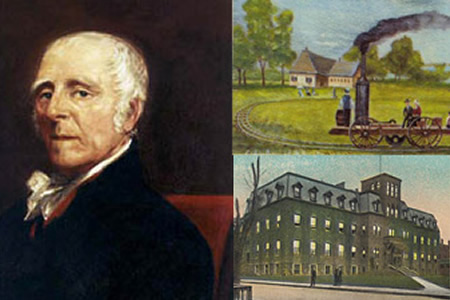
Building Hoboken
While living in Manhattan with his wife, Colonel John Stevens became interested in building an estate. In 1783 he explored some land across the river. William Bayard’s farm had stood there, but it was confiscated by the colonial government of New Jersey because Bayard sided with the British Crown. On May 1, 1784 Stevens bought Bayard’s old farm from the State of New Jersey for 18,340 Pounds sterling, or about $90,000. He settled on the name Hoboken, a…
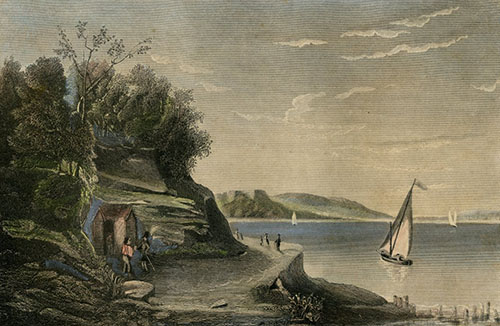
Steamboat Innovation
According to legend, Colonel Stevens was riding near the Delaware River in 1787 when he happened to see John Fitch’s experimental steamboat travelling up the river. He was so intrigued he followed the boat to its dock and thoroughly investigated it. Whether this chance meeting happened, or if it was regular correspondence with other learned men that sparked Stevens’ interest in steam power, by the late 1780s he was driven to work on the steam engine’s applications for…
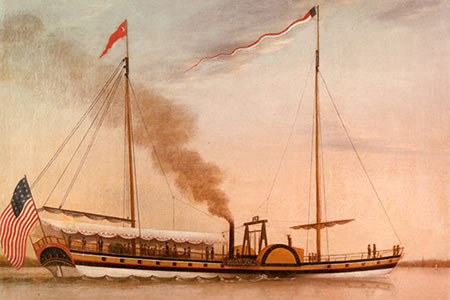
First Family in American Railroading
The railroads that stretch out of Hoboken and across the country are in large part the fruit of the brilliant minds of John Stevens and his son Robert.
John Stevens was a visionary advocate of steam-powered railroads at a time when few could even imagine how they would work. Around 1810 he turned the steamboat operations over to his capable sons and devoted himself to improving overland transportation. In 1811 he applied for a railroad…
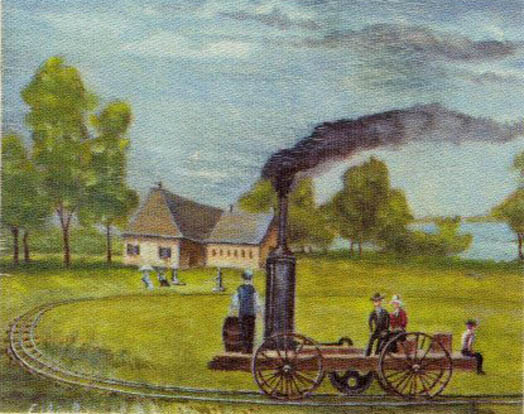
Racing Yachts
The Stevens family had a strong influence on the development of American yachting. On July 30, 1844, John Cox Stevens hosted the organizational meeting of the New York Yacht Club on his yacht Gimcrack. He would serve as First Commodore of the club until 1854. Despite the name, the club met in Hoboken. A clubhouse was built on Stevens family land just north of Castle Point.
The NYYC’s ship…
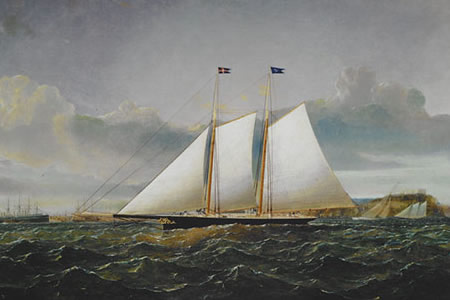
Naval Warfare
The pioneering work of Robert and Edwin Stevens in warship engineering was not as successful as the railroad, but it likely influenced advances in naval warfare in the mid nineteenth century. The Stevens Battery, an ironclad warship that was planned but never completed, demonstrated and likely inspired advances in warship construction.
The battery had a long history. During the War of 1812, Colonel John Stevens wrote a proposal for…
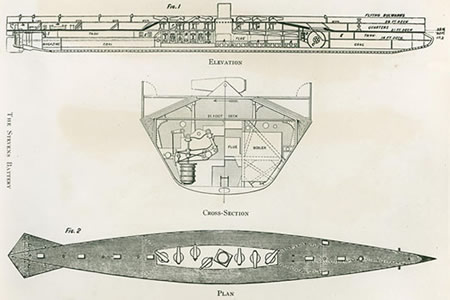
Hoboken Grows
As the Stevens family’s innovations and businesses continued to blossom, the town they founded grew.
Attracted in part by the efforts of the Hoboken Land and Improvement Company, big European shipping companies began establishing docks in Hoboken in the 1840s. The town’s population swelled, in large part from German and Irish immigrants. In 1849, the township of Hoboken was formed and its boundaries separated from North Bergen. On March 28, 1855, Hoboken was incorporated as a city.
Between…
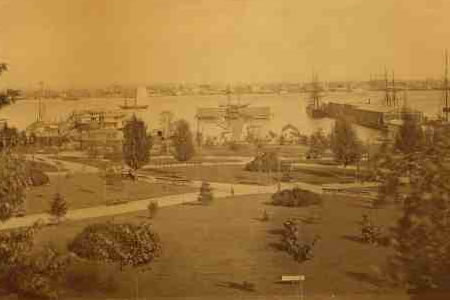
Horticulture and Water Works
Though their fame is primarily the result of work in other areas, the Stevens’ contributions to American horticulture and water supply infrastructure are fascinating examples of their broad interests.
Colonel John Stevens had a keen interest in horticulture. Early after clearing the land at Hoboken, he planted many fruit trees that were new to the region. In 1797 he imported the first red camellia from England to America, and in 1798 he imported the first chrysanthemum…
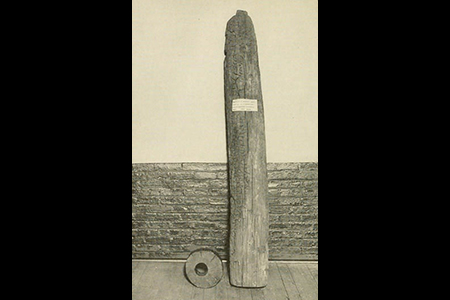
The Castle
The family built the Stevens Castle in the 1850s. The new family residence was designed by Alexander Jackson Davis, a prominent architect of the time. It stood on the highest point in Hoboken, on a bluff overlooking the Hudson River.
The Castle contained numerous rooms for the many members of the Stevens family, as well as rooms for entertaining guests. Rooms were decorated with portraits of the family and ornate flourishes. A greenhouse was on the grounds as…
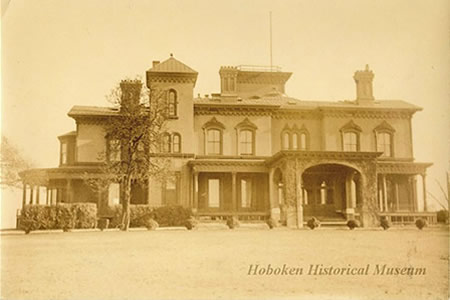
Stevens Institute of Technology
Appropriate for a family of pioneering engineers, the first college in America dedicated to mechanical engineering carries the Stevens name.
Edwin Augustus Stevens died in 1868, leaving a legacy of innovation and successful business management. His will provided for the establishment of a technical university, the first of its kind in America. In 1870, the Stevens Institute of Technology opened its doors to students. The university offered a rigorous course of study in engineering, scientific principles,…
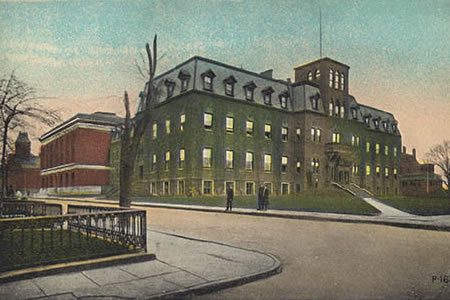
Civic Engagement
Continuing the civic sprit demonstrated by Hoboken’s founder in war and peace, several descendants of Colonel John Stevens have had important roles in philanthropy and politics.
The Stevens family never served in elected offices in Hoboken, preferring other roles in civic life. Edwin Stevens served as tax commissioner, public works commissioner and trustee of the local Episcopal Church. He also served the State of New Jersey as chairman of the commission that established the Interstate Palisades Park, a…
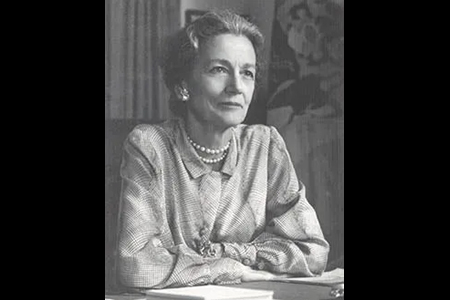
Legacy
While the descendants of Colonel Stevens no longer live in Hoboken, the family’s legacy can be seen around town.
The Stevens Institute overlooks the river along Castle Point and stretches across the last lands the Stevens family bequeathed. At the university’s Davidson Laboratory, experiments in ship design echo the work of the Stevens brothers in improving maritime engineering. The Church of the Holy Innocents, the charming small homes on Willow Terrace, and the Hoboken Land and Improvement Company building…
